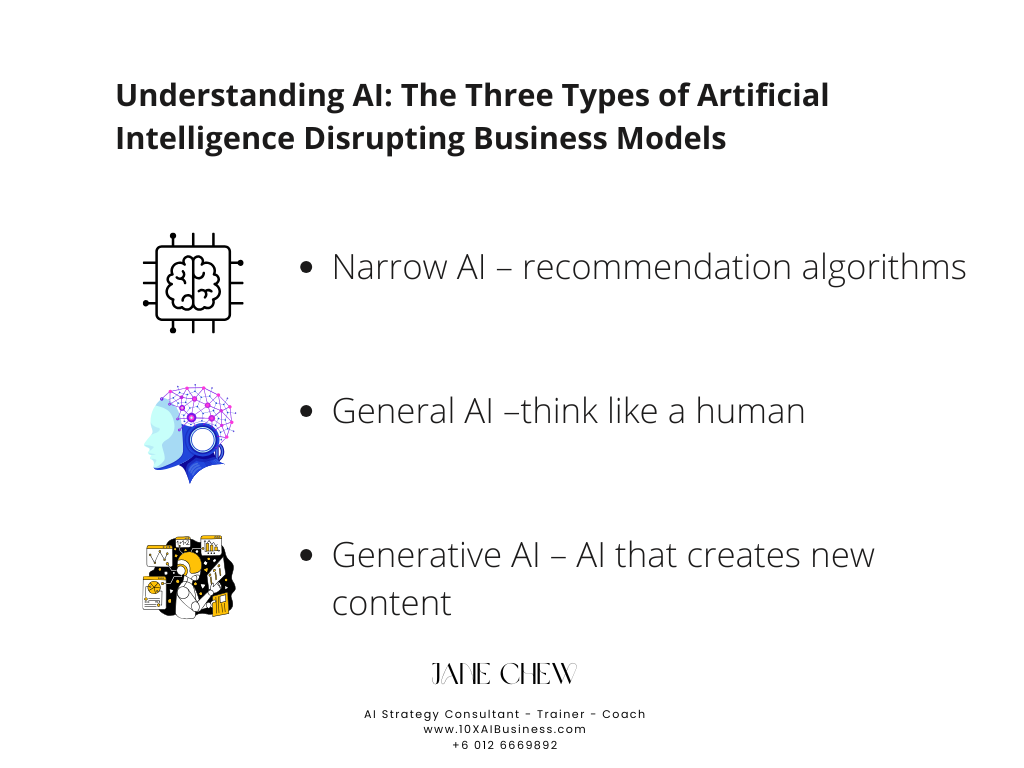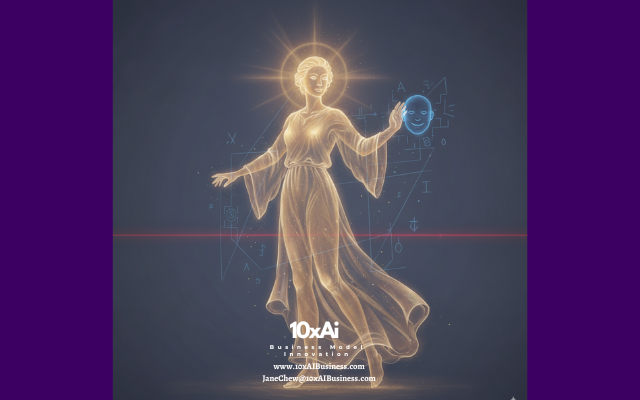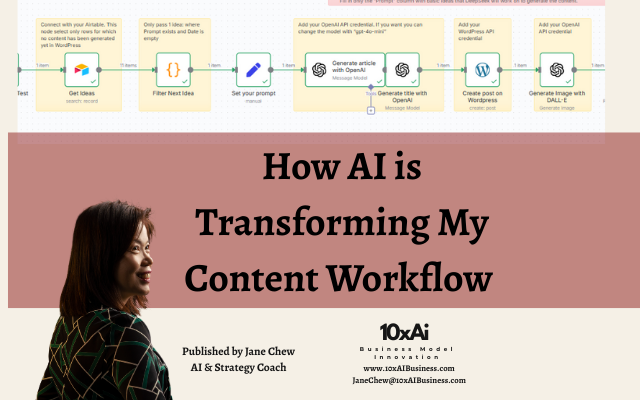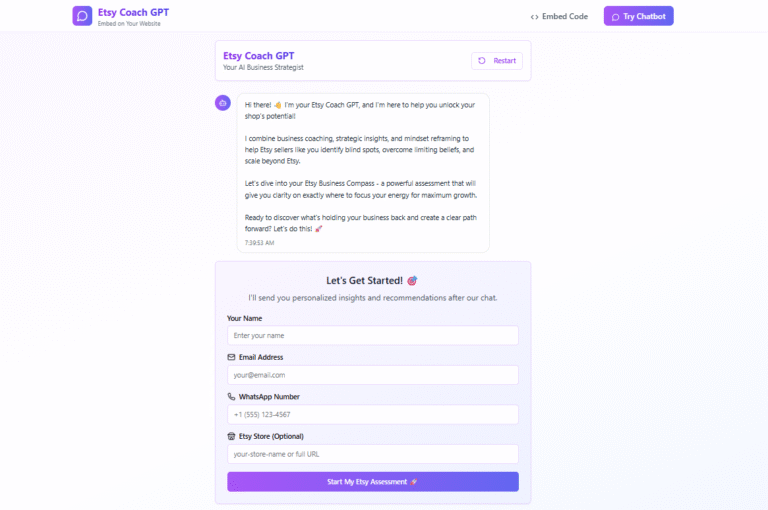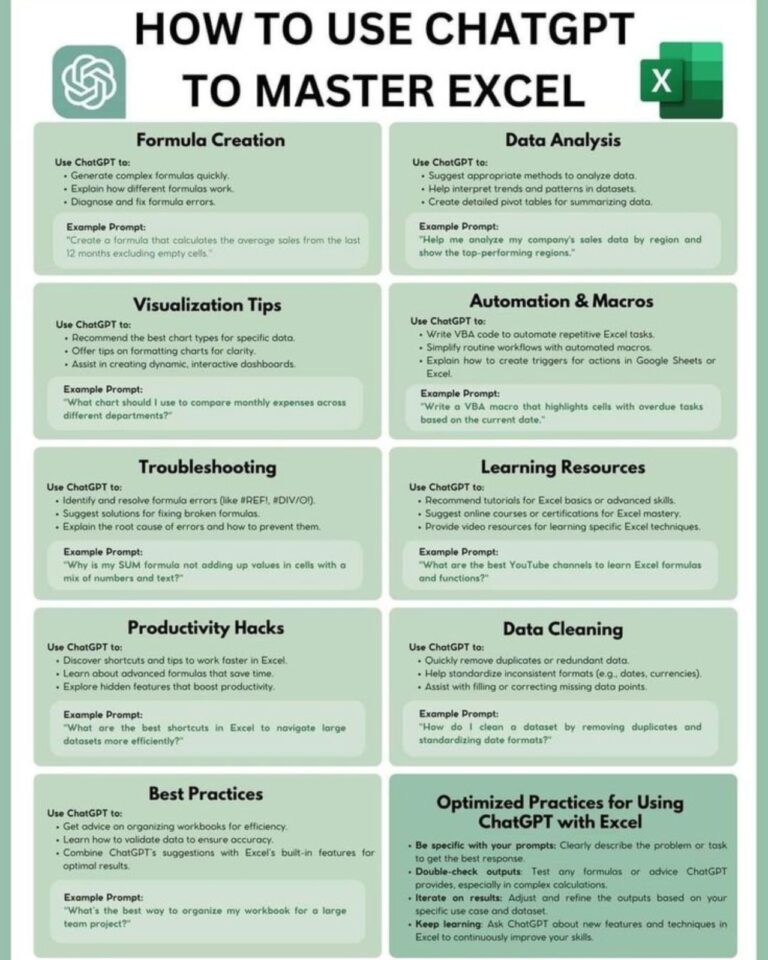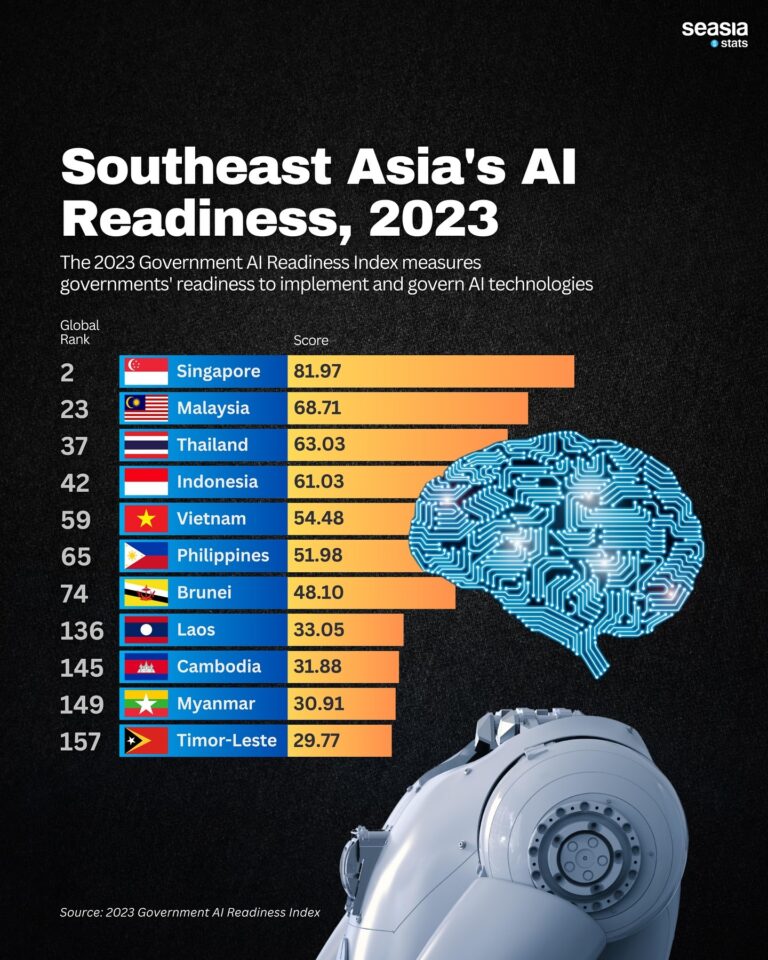Artificial Intelligence (AI) is reshaping the way businesses operate, compete, and innovate. From enhancing customer experiences to optimizing supply chains, AI is a game-changer for business models. But not all AI is created equal. Understanding the three key types of AI—Narrow AI, General AI, and Generative AI—can help business leaders strategically harness AI’s potential.
1. Narrow AI: The Power Behind Recommendation Algorithms
Narrow AI, also known as Weak AI, is designed to perform specific tasks efficiently. This type of AI excels at pattern recognition and data processing but lacks general intelligence beyond its designated function. Examples include:
- Recommendation Algorithms: Platforms like Amazon, Netflix, and Spotify use AI to analyze user behavior and make personalized recommendations.
- Chatbots and Virtual Assistants: Customer support bots and virtual assistants like Siri and Alexa provide responses based on predefined rules and learned behaviors.
- Fraud Detection Systems: Banks and financial institutions deploy AI to identify suspicious transactions and prevent fraud.
Despite its limitations, Narrow AI significantly impacts businesses by enhancing decision-making, improving efficiency, and personalizing customer experiences.
2. General AI: The Future of Human-Like Intelligence
General AI (AGI) represents a more advanced and futuristic stage of AI that can understand, learn, and apply knowledge across different domains—much like a human brain. Unlike Narrow AI, which is limited to specific tasks, General AI can think, reason, and solve problems in a generalized way. While still in the realm of theoretical research, its potential implications for business disruption include:
- Autonomous Decision-Making: Businesses could rely on AI to handle complex strategic decisions without human intervention.
- Adaptive Learning Systems: AI-driven systems capable of continuous learning and adaptation across various industries.
- Human-Like Interaction: AI that can understand and respond to emotions, making it possible for businesses to deliver highly personalized customer service.
Though AGI is not yet a commercial reality, its development could revolutionize industries by replacing human cognitive work at scale.
3. Generative AI: The Creative Disruptor
Generative AI is a breakthrough technology capable of creating new content, from text and images to music and even software code. Unlike traditional AI, which analyzes and classifies existing data, Generative AI generates original outputs based on learned patterns. Business applications of Generative AI include:
- Content Creation: AI tools like ChatGPT and DALL·E create written articles, ad copies, and digital artwork.
- Product Design and Prototyping: AI generates innovative product ideas and automates design processes.
- Software Development: AI assists in coding, debugging, and even generating entire software applications.
Generative AI is disrupting business models by reducing content production costs, accelerating innovation, and enabling hyper-personalization at scale.
Why Businesses Need a Strategy for AI Disruption
AI is not just a technological upgrade—it’s a fundamental shift in how businesses create value and stay competitive. To harness AI effectively, businesses must:
- Identify Opportunities: Determine where AI can enhance efficiency, creativity, and decision-making.
- Adapt Business Models: Leverage AI to innovate products, services, and customer engagement strategies.
- Ensure Ethical AI Use: Address concerns around bias, data privacy, and transparency.
AI is here to stay, and businesses that strategically integrate it into their operations will gain a significant competitive edge. The key is not just to adopt AI but to understand its impact and leverage it to drive sustainable growth.
Stay tuned for the next post in this series, where we’ll explore how AI is redefining traditional business models and what leaders can do to stay ahead of the disruption.

